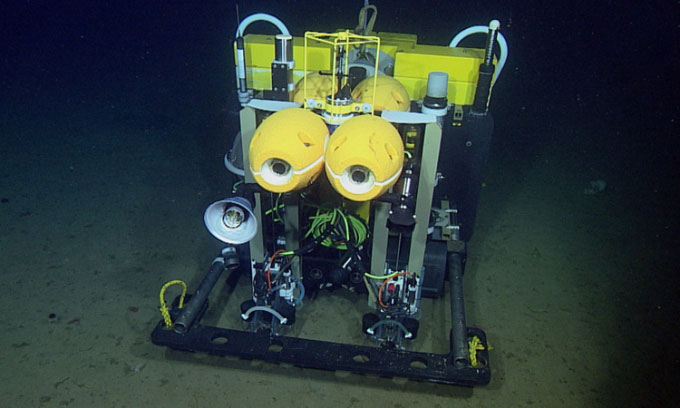The Benthic Rover II, made from abrasion-resistant materials and capable of withstanding high pressure, utilizes low-power devices to operate continuously for a year.
The autonomous robot Benthic Rover II, developed by a team of scientists at the Monterey Bay Aquarium Research Institute (MBARI), has provided valuable insights during seven years of deep-sea research, as reported by Interesting Engineering on November 14. Each time it begins a year-long operational cycle, the robot is deployed to a location known as Station M, approximately 225 kilometers off the coast of California.

Benthic Rover II autonomously navigating the deep sea floor. (Photo: MBARI).
In a recent study published in the journal Science Robotics earlier this month, the MBARI team presented various data collected by the Benthic Rover II regarding the deep-sea floor. For instance, from November 2015 to November 2020, there was a significant increase in the amount of dead phytoplankton and organic material sinking to the seabed, accompanied by a decrease in dissolved oxygen levels in the deep-sea water.
“The deep-sea exploration robot helps monitor the connection between the water column and the seabed over the long term. Understanding such connections is crucial for predicting the health and productivity of our planet during climate change,” explained scientist Ken Smith from MBARI.
To understand Earth’s climate and carbon cycle, scientists need to study the deep sea. However, challenges such as high pressure and the corrosive nature of seawater make deploying equipment for carbon research at great depths nearly impossible.
The Benthic Rover II addresses this issue with its ability to continuously monitor the seabed. Because it operates non-stop, the robot can record fascinating phenomena that scientists have never observed before, according to Alana Sherman, an expert at MBARI. “Without continuous monitoring, you might miss the main event,” Sherman explained.
The Benthic Rover II is constructed from abrasion-resistant titanium, plastics, and pressure-resistant foam. As a result, this robot can operate at depths of up to approximately 6,000 meters. It is equipped with a computer control system and software capable of running for a year without failure.
Additionally, the Benthic Rover II employs electronic devices that consume very little power, allowing the battery to last throughout the year. The robot is quite large, measuring 2.6 meters in length, 1.7 meters in width, and 1.5 meters in height. However, it only consumes an average of 2 watts of electricity, equivalent to that of an iPhone.


















































